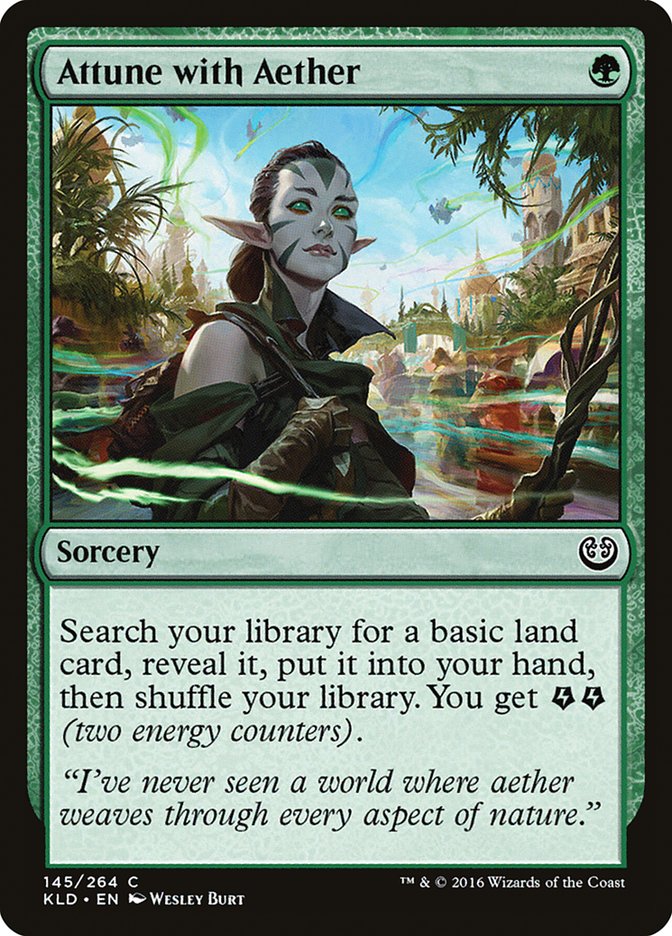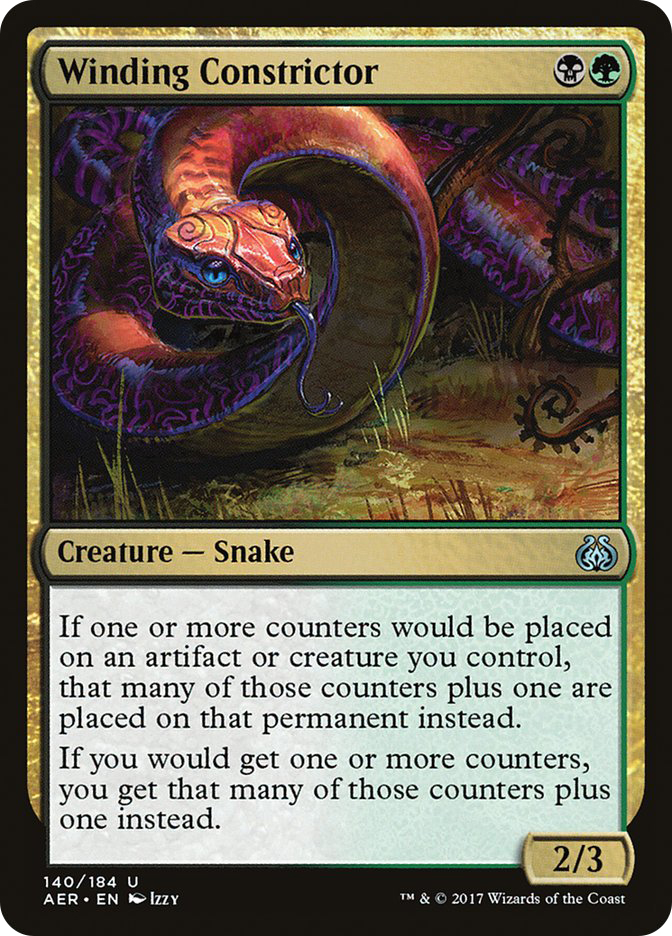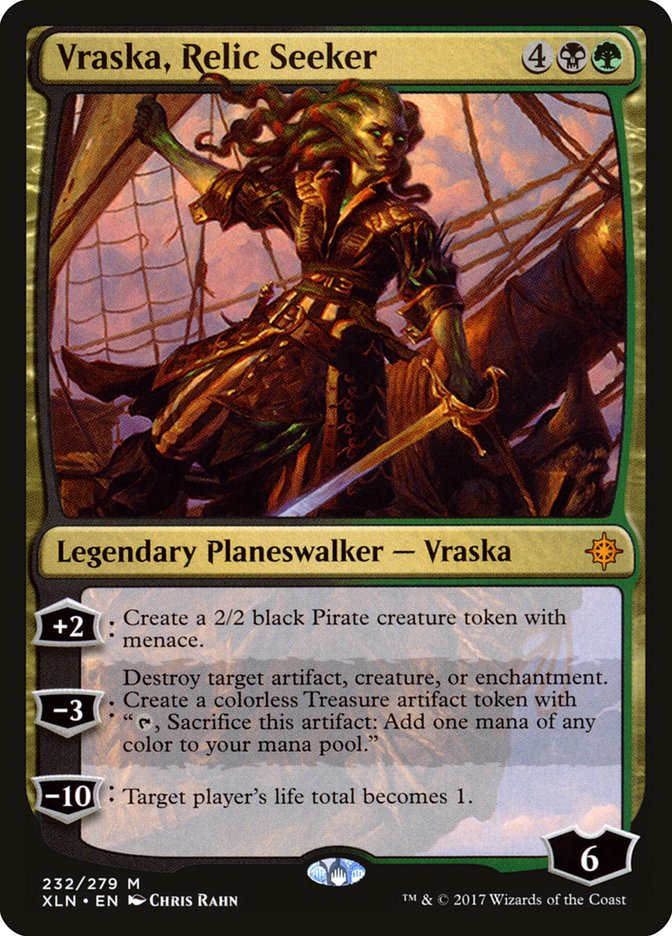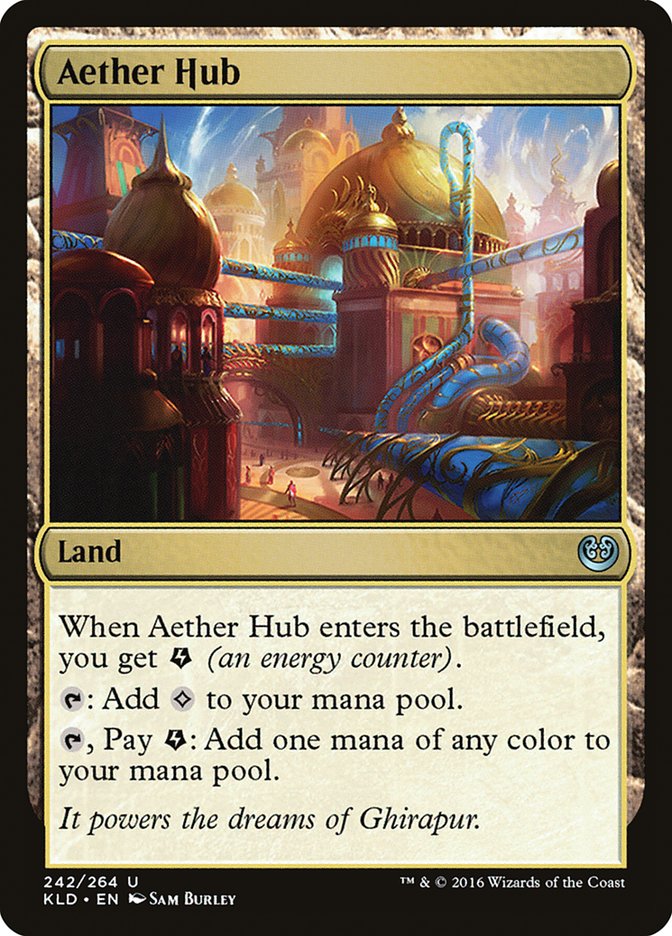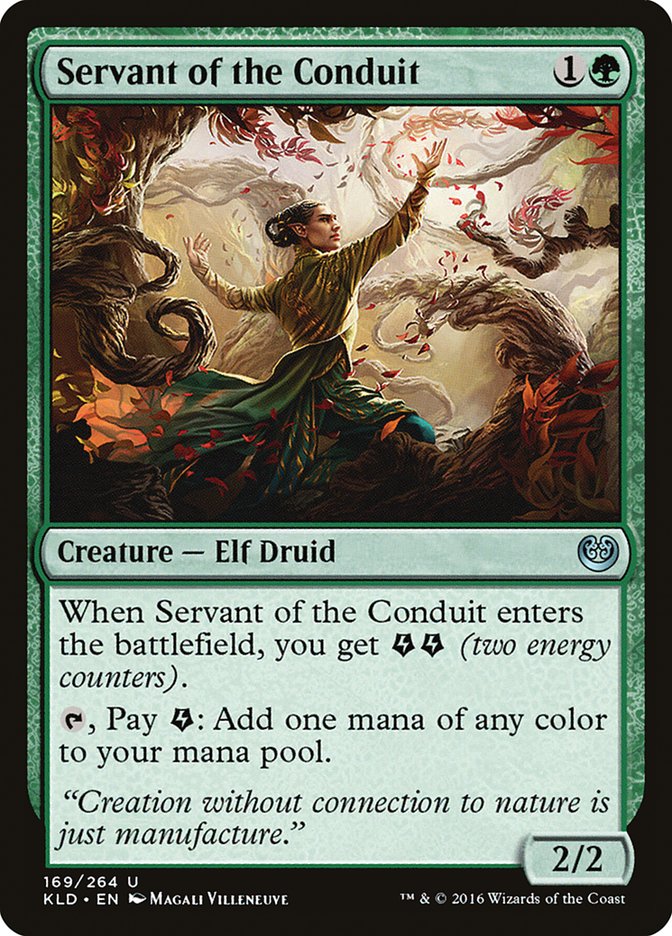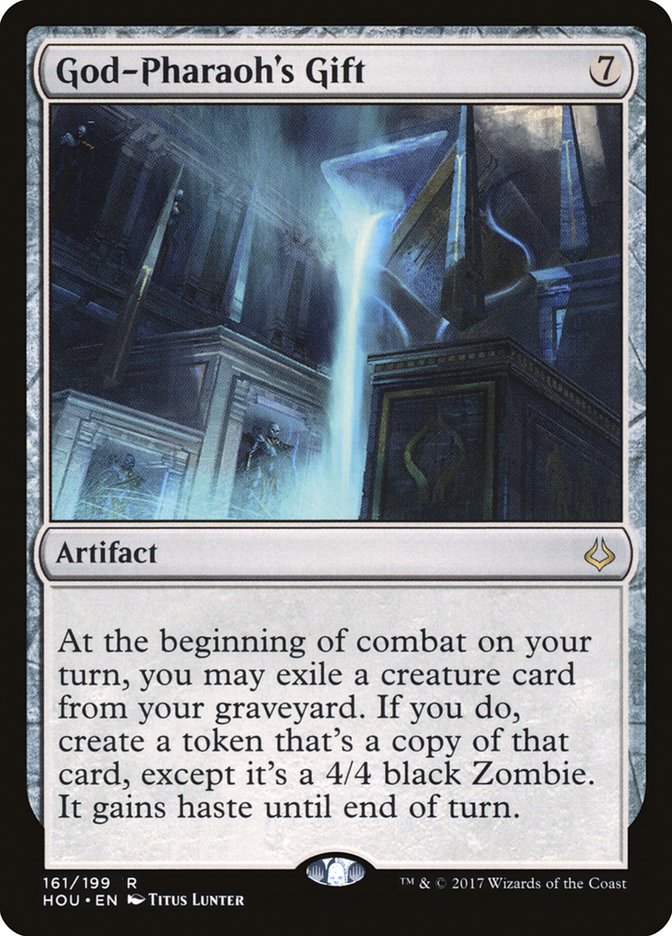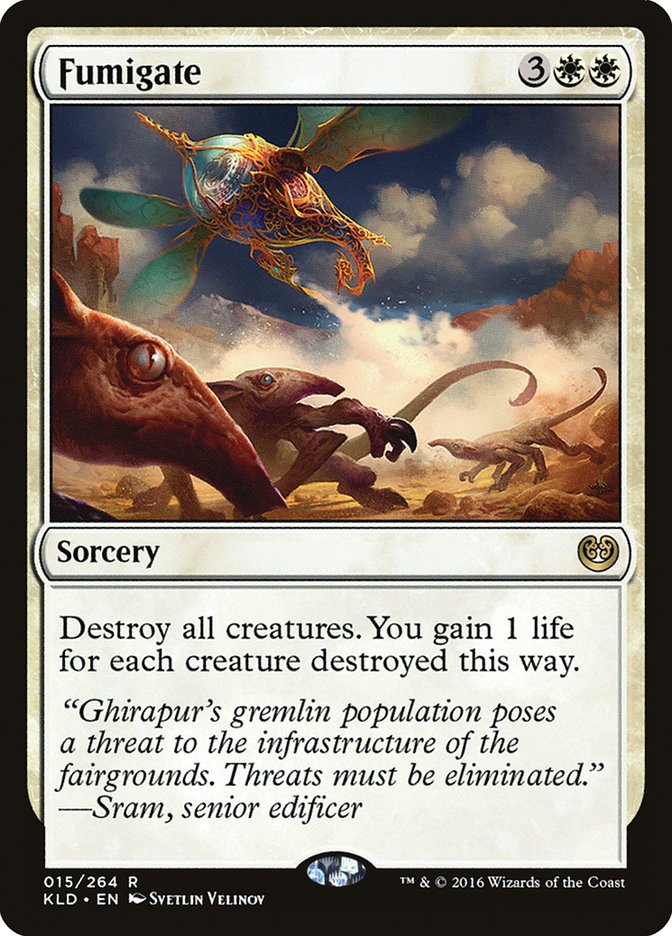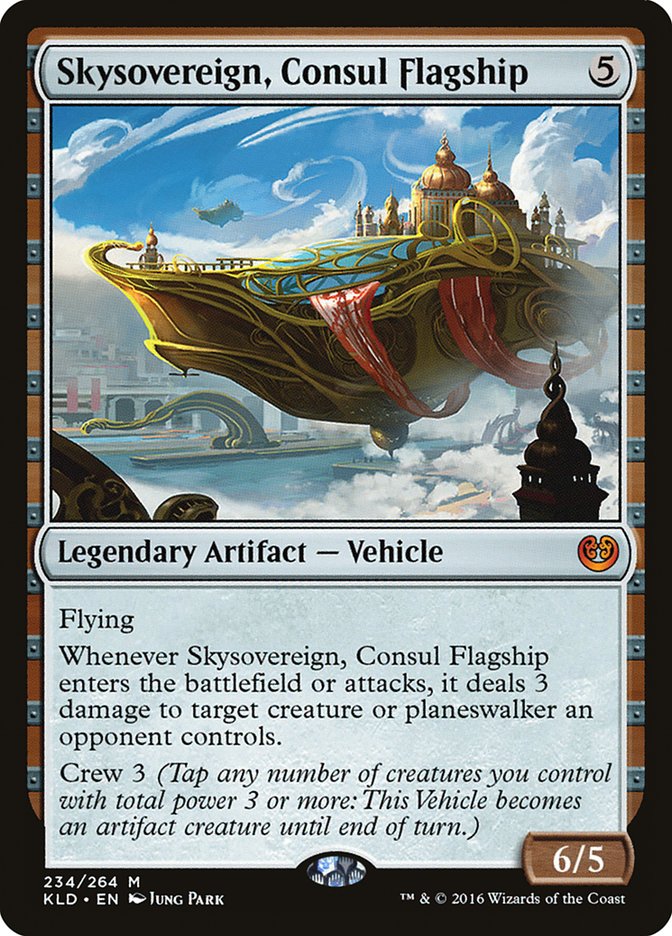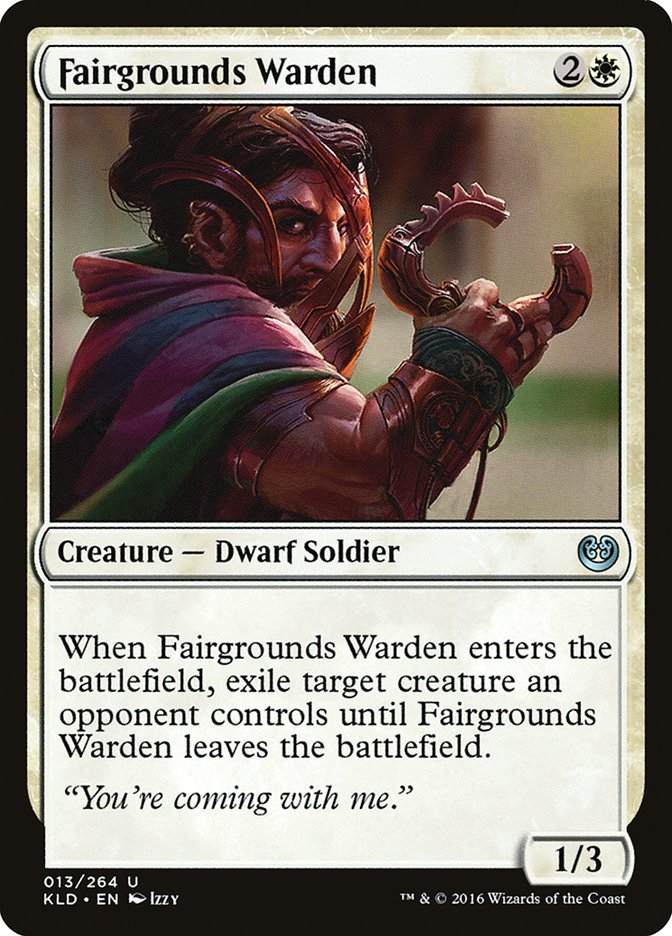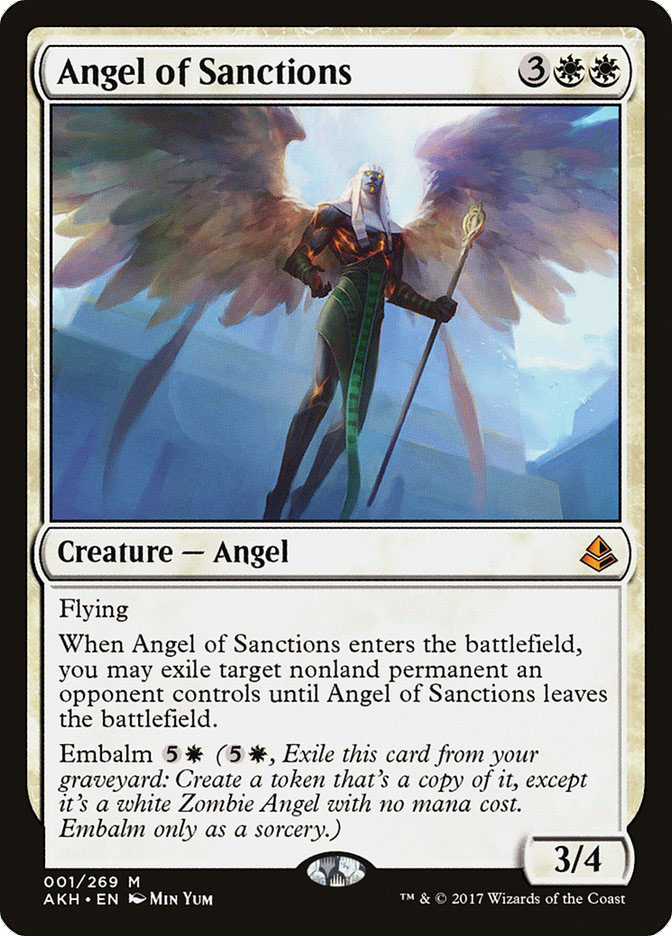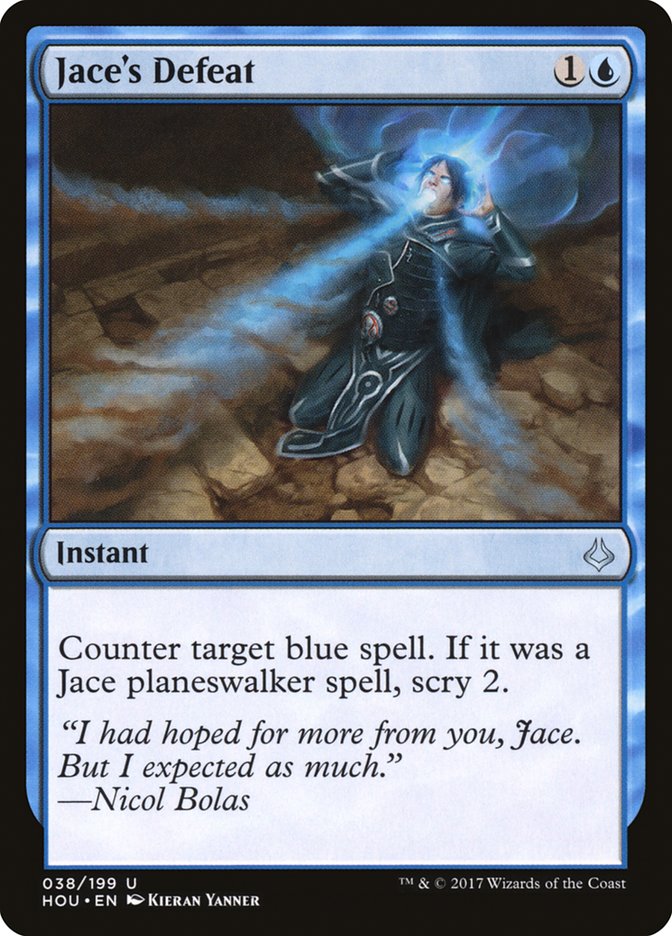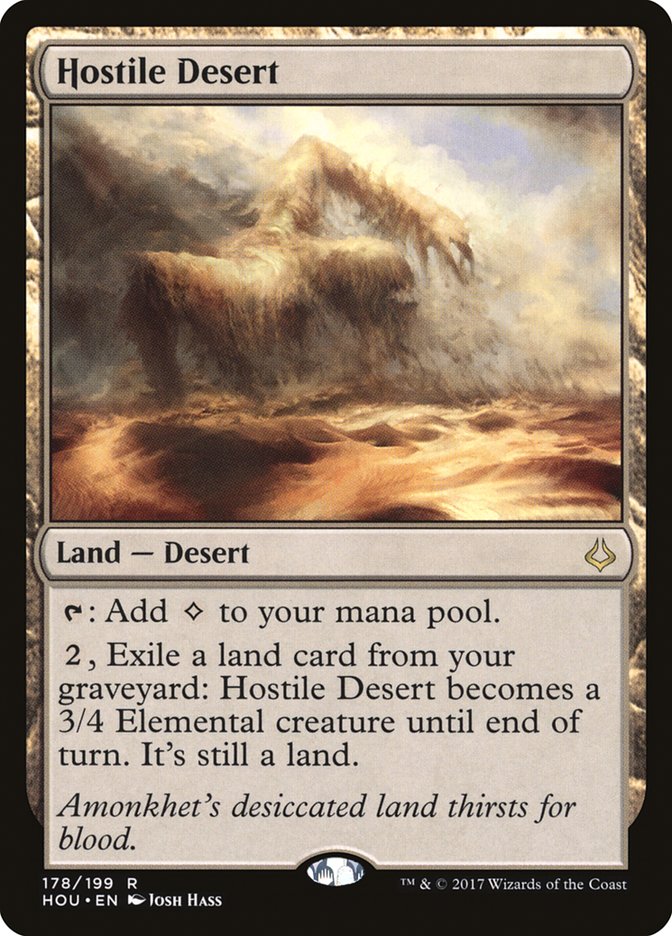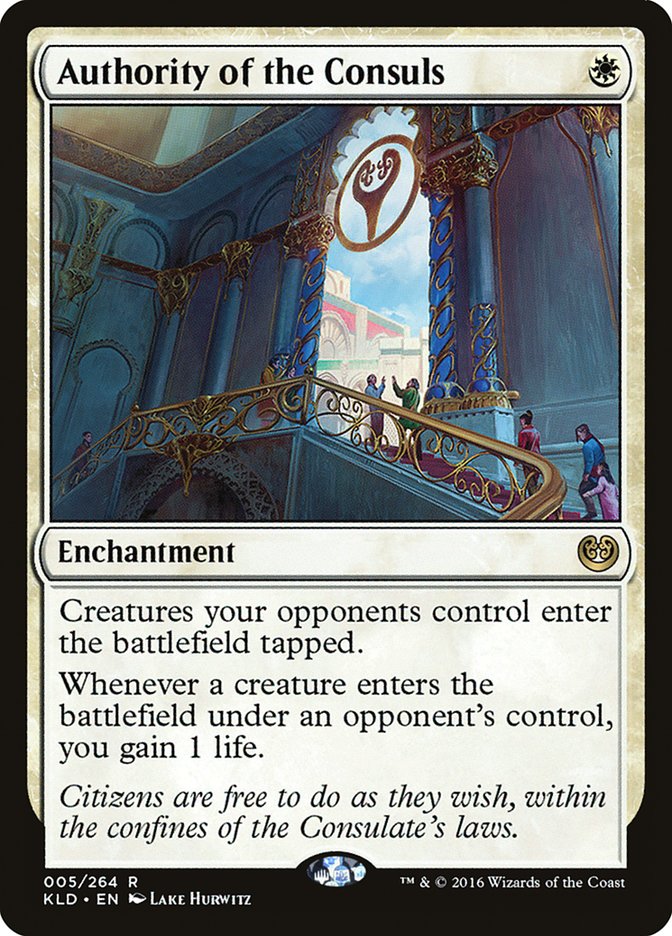The year is 20XX, and Attune with Aether is running rampant through the Standard format. Will you side with the resistance, or fall in line?
I know which side I’m on.
The winning side.
Attune with Aether is just another Magic card and we’re stuck with it for the foreseeable future. Maybe in a year or so it’ll be gone, but for now we’re stuck with it. And with Attune with Aether come all the benefits it brings.
But Pro Tour Ixalan brought us some semblance of hope. While Energy was still the champion, it didn’t come in the form most people expected. Instead of Temur “good stuff,” we got a much more aggressive slant in Sultai. Hilariously enough, this version of Sultai Energy aggro looked very similar to the one used by Andrew Jessup to win #SCGDFW just a few weeks before the World Championship.
Creatures (27)
- 4 Longtusk Cub
- 4 Winding Constrictor
- 2 Rishkar, Peema Renegade
- 4 Glint-Sleeve Siphoner
- 4 Rogue Refiner
- 4 Walking Ballista
- 1 The Scarab God
- 4 Hostage Taker
Lands (21)
Spells (12)
Sideboard

Creatures (25)
- 4 Longtusk Cub
- 4 Winding Constrictor
- 2 Rishkar, Peema Renegade
- 4 Glint-Sleeve Siphoner
- 4 Rogue Refiner
- 3 Walking Ballista
- 1 The Scarab God
- 3 Hostage Taker
Lands (21)
Spells (14)

But after the World Championship, where Huey Jensen used Temur Energy to take down the tournament, Sultai Energy fell off people’s radar, and I’m not sure why. No one played the archetype at the World Championship, and people ultimately forgot about it until this past weekend. Seth Manfield and many other members of Team Genesis (including our very own Brad Nelson) played the Sultai Energy aggro deck to an astounding win percentage in constructed (hovering around 70%).
But why was Sultai Energy good when it seemingly wasn’t all that great just a few weeks before Pro Tour Ixalan? Well, for starters, I think that Sultai Energy has great matchups across the board, except for Temur (and Four-Color) Energy. The bigger spells like Glorybringer and The Scarab God are pretty tough for them to beat once resolved, and all the cheap removal helps stabilize in the early turns. However, if the Temur/Four-Color decks don’t draw that early removal, creatures like Winding Constrictor just get out of control.
My guess is that the format, though heavy with an Energy theme, had plenty of alternate archetypes for Sultai Energy to prey upon. With an aggressive clock and cheap removal, Sultai Energy can pick apart decks like Ramunap Red. Additionally, the Sultai color combination gives them access to both Duress and Negate, which are huge upgrades against both control and combo decks. Walking Ballista, while mediocre against Temur Energy, is fantastic against Ramunap Red and virtually all other aggressive strategies. And when used alongside Winding Constrictor, it can singlehandedly dominate the battlefield.
And while the Temur/Four-Color Energy decks might not be great matchups, I don’t think they’re necessarily bad. You have nut draws, a lower curve, and almost as many powerful cards in your deck. Your cheap creatures just make their spot removal a bit better, and your lack of Whirler Virtuoso can mean losing an air battle. So where does that leave us?
My gut says that Temur and Four-Color Energy are going to be even better this weekend at #GPAtlanta because you are favored against Sultai Energy, but by how much? And, if you do play one of the stock-ish Energy shells, how will you change your deck to compensate for the resurgence of Sultai Energy? Here’s where I’m starting.
Creatures (22)
- 4 Longtusk Cub
- 2 Bristling Hydra
- 4 Whirler Virtuoso
- 4 Servant of the Conduit
- 4 Rogue Refiner
- 2 Glorybringer
- 2 The Scarab God
Planeswalkers (5)
Lands (22)
Spells (11)

I’ve been playing all sorts of Four-Color Energy decks on Magic Online recently, but this one looks flat-out awesome. The light black splash for The Scarab God and Vraska, Relic Seeker is easy to accommodate.
My version was trying to be a bit heavier on black for both Gonti, Lord of Luxury and Vraska’s Contempt, with Glint-Sleeve Siphoner as a boon to the two-drop slot, but the constant mana issues have me taking a step back from that archetype (for now). This version seems to have all the same end-game strength without the color issues.
But what should we change, if anything? My gut says that Chandra, Torch of Defiance will be an all-star against Sultai Energy, but it looks pretty embarrassing against Ramunap Red and other aggressive strategies, as well as the God-Pharaoh’s Gift decks.
Another Abrade probably couldn’t hurt, as I expect the U/W Gift deck to show up in a big way. My biggest problem with this deck is the four-drop slot, which is why I was so excited to be playing Gonti, Lord of Luxury in the first place. But here we are.
If you don’t want your manabase to suck and you still want a reasonable amount of power in the four-drop slot, Bristling Hydra and Chandra, Torch of Defiance are likely your best bets. And that isn’t to say that either of these cards is inherently bad, but mostly that I wanted to try something different. Bristling Hydra is one of your better threats against control, but Chandra, Torch of Defiance can spell lights out against a variety of opponents. And with Whirler Virtuoso to protect it, playing more copies seems like a no-brainer.
If you look back to earlier this year during the Saheeli Rai / Felidar Guardian era, the deck didn’t really take off until people realized that Chandra, Torch of Defiance was just a phenomenal addition to the deck. Extra removal and extra pressure against control decks was exactly what the archetype needed. Enough with the Elder Deep-Fiends and other garbage; just play the most powerful cards in that mana slot and you’ll make your deck much better. Chandra, Torch of Defiance also allows you to attack from a different angle, and many opponents might just fold to it singlehandedly. The card advantage gained from the plus ability can bury opponents when you’re ahead, or just push you ahead when you’re at parity.
In my eyes, the black splash in this deck is almost free. With Attune with Aether, Aether Hub, and Servant of the Conduit, the first black mana isn’t that hard to attain. The toughest part is usually the second red mana and the first black mana, and you’ll occasionally have to choose. But when your deck is firing on all cylinders, it shouldn’t be all that hard to acquire both.
The black splash also gives you some longevity in games where you don’t have any business winning. The Scarab God and Vraska, Relic Seeker are huge additions to the archetype, giving you game against control and midrange that was previously inaccessible. And to me, that’s the biggest draw of this version compared to the straight Temur version. While regular Temur has a potentially better early-game, the late-game leaves something to be desired. If your opponent can brick Bristling Hydra in some way, you’re left only with Glorybringer to finish the job. And if watching Pro Tour coverage is any indication, the format is now ready to handle such threats.
If you’re able to curve out with Four-Color Energy, very few decks in the format can compete. Ramping into Chandra, Torch of Defiance on the play is immensely powerful, and can propel you into the driver’s seat immediately. The same can be said for ramping into a Harnessed Lightning plus another two-drop creature on the third turn. And while we don’t have the synergy of Longtusk Cub and Winding Constrictor to punch super-hard, Longtusk Cub does a good chunk of damage all by itself.
For all these reasons, and many more, I’m leaning toward this deck for Grand Prix Atlanta, and I think you should be too. If not for a misplay by Mike Sigrist in the Top 8, this deck could very well have won the Pro Tour. While the additional color makes your aggressive matchups a little worse, the upside of having such powerful finishers against the rest of the format is absurd, and makes it well worth the investment.
I’ll be playing this deck in a few Leagues before the weekend, but here’s where I’m leaning right now.
Creatures (21)
- 4 Longtusk Cub
- 2 Bristling Hydra
- 4 Whirler Virtuoso
- 4 Servant of the Conduit
- 4 Rogue Refiner
- 3 The Scarab God
Planeswalkers (5)
Lands (22)
Spells (12)

I’ve been impressed with Die Young as an answer to Hazoret the Fervent as well as a generic removal spell. While it is another black card to “splash,” the upside is getting a two-mana answer to one of the most problematic cards in the format. I could be wrong on cutting Glorybringer for another Abrade and an additional The Scarab God, but I just haven’t been impressed by Glorybringer in a while. The card obviously shines against Sultai Energy, and that could be reason enough to justify playing it, but I’m not sold. The Scarab God is equally insane in the matchup, if not better, and I just want to make sure I can cast one on the fourth or fifth turn virtually every game. The rest of the deck feels almost perfect, so I don’t want to mess around with it too much.
My Other Potential Contender
There has been a lot of buzz going around about Pascal Maynard’s U/W Gift deck that placed second at Pro Tour Ixalan. I talked about the deck a little bit last week when grading some of the more interesting archetypes found on Magic Online, but I think it deserves another look after putting up such a strong finish.
Creatures (16)
Lands (22)
Spells (22)

My gut says that this deck will often fold to a Negate, and might also have trouble beating a single disenchant effect (so long as they don’t get to trigger the God-Pharaoh’s Gift). While this deck can certainly play longer games thanks to Champion of Wits and Angel of Invention, the deck has a very tough time of winning if it can’t stick a God-Pharaoh’s Gift.
That shouldn’t be too much of a problem for the deck thanks to so many dig spells. The trouble comes with a fast clock coupled with that disruption. That’s why Seth Manfield was able to take the match in the finals. Duress, Negate, and a few ways to kill artifacts is all it takes, so long as you can back that disruption with pressure. And that strategy, like in every Magic format, is how you beat combo decks. Now, God-Pharaoh’s Gift isn’t a true combo deck and instead acts much like the Unburial Rites Reanimator deck we saw a few years back. But if the engine gets rolling, and you can’t stop God-Pharaoh’s Gift, you’re not going to beat 6/6 flying, haste, vigilance, lifelink creatures that pump the whole team. It’s virtually impossible to race one eternalized Angel of Invention, let alone two or three.
The way you don’t want to attack this deck is with graveyard hate. Not only does God-Pharaoh’s Gift fail to “target” creatures in the graveyard, they also have no trouble at all filling their graveyard once you’ve exiled it in some way. Chart a Course and Strategic Planning see to that. If you’re able to use something like Lost Legacy to exile all their copies of Angel of Invention, they can still grind you out with 4/4 Sacred Cats or Champion of Wits.
God-Pharaoh’s Gift is such a ridiculous card that it needs no real explanation as to why it’s there. Refurbish, on the other hand, gives you a reason to play more spells and fewer creatures. Gate to the Afterlife is no longer your main way of getting God-Pharaoh’s Gift onto the battlefield, which means you’re free to fill your deck with a normal amount of regular spells, both for interaction and for fueling your graveyard. And once you’ve managed to kill a God-Pharaoh’s Gift that was on the battlefield, all those dig spells make it very easy to find a way to put it back onto the battlefield.
While I don’t necessarily agree with all the choices in the deck, I do think they all serve a greater purpose. For example, Search for Azcanta is a pretty sweet addition to the deck because it can fill your graveyard, dig for important combo pieces, and eventually flip into a land that can help you hard-cast God-Pharaoh’s Gift or Eternalize Champion of Wits. But I’m still not sold that it is good enough.
The best part about Search for Azcanta is flipping it into Azcanta, the Sunken Ruin and burying your opponent in card advantage. We saw this happen over and over again at the World Championship. However, God-Pharaoh’s Gift pushes the other side of this card pretty hard, and showcases just how strong ramping can be in a U/W deck. Perhaps it is good enough, but it just rubs me the wrong way to see a card being used for everything other than its payoff.
Evaluating the Sideboard
I would love to see more copies of Fumigate in the sideboard. After all, you don’t really care about your own creatures dying too much, and the easiest way for decks like Temur to beat you is with early threats. If you can overload their Negates and/or discard spells, it should put you in a reasonable position around the sixth or seventh turn. Fumigate is one of the best cards against Temur, after all.
Skysovereign, Consul Flagship just feels like overkill, and it just makes you slightly more vulnerable to artifact destruction. Splash damage, as it were. And while Skysovereign, Consul Flagship is a powerful card indeed, I don’t really think it deserves a sideboard slot here.
I’m in love with Fairgrounds Warden, if I’m being honest. It buys you time. It blocks. It comes back for seconds with God-Pharaoh’s Gift and keeps buying you time, which is all you need in a deck like this. In actuality, Fairgrounds Warden might be the perfect sideboard card for a deck like this. We saw Fiend Hunter in some Unburial Rites decks back in the day, and Fairgrounds Warden plays a similar role in containing early aggression while buying you time. Stick with four.
I get it. This is a solid card to help you answer stuff in the mirror and put up roadblocks against annoying threats from the opponent. And even if they kill it and you don’t have God-Pharaoh’s Gift at the ready, the embalm cost isn’t that bad. My only concern is how fragile it can be sometimes. But, like Fairgrounds Warden, it plays a very specific role in buying you time. I’d personally want to cut down to two copies, but I wouldn’t fault you for playing three.
Love it. Negate doesn’t stop Torrential Gearhulk. Screw The Scarab God. A+.
I don’t really get why this card is here, but it can help pressure planeswalkers and acts as an additional land to sideboard in when you start bringing in more expensive spells. If you’re going to sideboard a land, then Hostile Desert is certainly a fine one. This is one of a few decks that can actually turn it on with regularity, so it’s nice to see it getting some playtime.
Might want a second. Ramunap Red with four copies of Abrade is likely this deck’s worst matchup. I could be wrong here, and Sacred Cat could be a huge beating, but my gut says that Ramunap Red will overrun this deck before it gets the engine going. Of course, any draw that features putting a God-Pharaoh’s Gift onto the battlefield along with Angel of Sanctions on the fourth turn is going to be lights out for Ramunap Red.
So for the non nut-draws, Authority of the Consuls makes sense. I might even want a second, but that might be overkill with four copies of Fairgrounds Warden and Fumigate(s).
Here is my updated sideboard for Grand Prix Atlanta:
Regardless of whether or not you play Attune with Aether this weekend, just know that a lot of other people will. And while Attune with Aether might not be the biggest offender, there is a reason why it’s in most energy-based decks. “Four-Color Green” decks have been around in various Standard formats throughout Magic’s history and have put up some of the best results. After all, playing whatever colors you want is fairly powerful.
While I’m leaning toward a version of Mike Sigrist’s Four-Color Energy deck, I do think this God-Pharaoh’s Gift deck has a lot to offer. Regardless, I expect a lot of both archetypes, and I need to build my deck accordingly. That’s one reason why I want to play a third copy of The Scarab God, and also why I want another copy of Abrade in the maindeck. Whatever deck I decide to play this weekend, I’ll be sure to have all the Energy decks and God-Pharaoh’s Gift at the top of my hit-list. Let’s just hope my sideboard plans are good enough.


